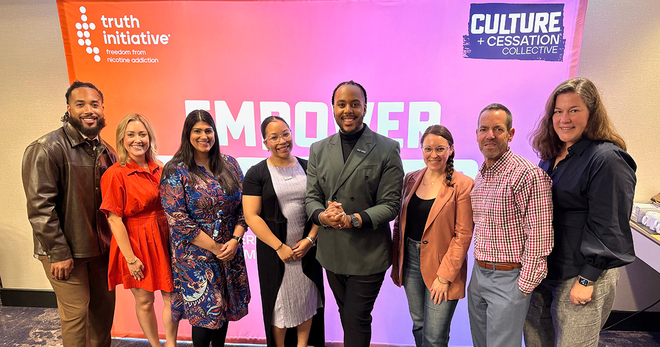Doctors’ offices: A missed opportunity in tobacco control
Tobacco use is the leading cause of preventable death, but physicians aren’t always asking adolescents if they smoke, according to a new Truth Initiative® study.
The research, published in Tobacco Induced Diseases, shows major gaps in youth tobacco use prevention and cessation efforts in the clinical setting. Fewer than half—49 percent—of adolescents who visited a doctor in the last year were asked if they use tobacco. Of those who used cigarettes in the past 30 days, only 26 percent were screened for and received advice from their physician to quit tobacco.
Strong evidence links tobacco counseling in the doctor’s office to tobacco prevention and cessation, and physician guidelines from the U.S. Public Health Service Clinical Practice recommend identifying and providing interventions for tobacco users.
All adolescents were not treated equally when it came to who was screened for tobacco, researchers found. Adolescents were more likely to receive tobacco screening during their doctor’s visit if they had private insurance, supporting previous evidence showing insurance status impacts quality of care. Adolescents screened for tobacco use were also more likely to be older (83 percent were between 14 and 17), female (57 percent) and non-Hispanic white (60 percent).
Screening for tobacco does not necessarily translate into cessation services; 37 percent of past 30-day tobacco users were screened for tobacco but did not receive any advice to quit. Researchers also found that Hispanic adolescents were significantly less likely to receive quit advice, a racial/ethnic disparity not previously reported in the adolescent literature.
“This underscores the need for additional resources specific to these racial/ethnic groups to help facilitate the discussion on tobacco use,” said the study’s lead author Lauren Collins, a senior research associate at the Schroeder Institute® for Tobacco Research and Policy Studies.
Truth Initiative researchers analyzed 2013 National Survey on Drug Use and Health data from nearly 13,000 adolescents between 12 and 17 who had visited a doctor in the last year. Researchers cite previous studies pointing to both individual and institutional reasons to explain this discrepancy between tobacco screening and support, including insufficient preparation and physicians finding screening and counseling as ineffective and unpleasant.
“Given the critical phase of development adolescence poses in tobacco use and the potential benefit of physician screening and advice to quit during adolescence, further research is needed to enable physicians to have an open dialogue on tobacco use with their adolescent patients,” Collins said.
Key takeaways
49 percent of adolescents who visited a doctor in the last year were asked if they use tobacco
Of past 30-day cigarette users, only 26.3 percent were screened for and received advice to quit tobacco
Adolescents who were screened by their physician were predominantly female (56.6 percent), white (60.1 percent), in late adolescence (83 percent) and covered by private health insurance (63.8 percent)
More in tobacco prevention efforts
Want support quitting? Join EX Program
By clicking JOIN, you agree to the Terms, Text Message Terms and Privacy Policy.
Msg&Data rates may apply; msgs are automated.


